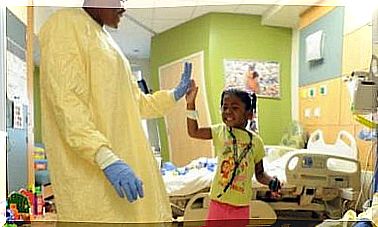Group Dynamics For Educational Work

To understand what we are referring to when talking about group dynamics for class work, we must first of all start with the definition of the concept of group dynamics or relational dynamics.
Group dynamics: what is it all about?
By group dynamics (or dynamics) we mean that psychosocial discipline that studies and analyzes the formation, development, problems, strengths and interdependent relationships that take shape within a group. The German-born North American psychologist, Kurt Lewin, was a pioneer in the field of group study.
This man sought to gain a greater understanding of groups and how they work by explaining their internal variations as a result of the forces and conditions that affect groups as a whole and how the components react.
At this point, if we consider that studying and analyzing the forces acting within a group allows us to better understand it, we could then think that working on these dynamics could help improve their functioning. How would that be possible?

Group dynamics for classroom work
To analyze the functioning of the groups, several group dynamics were developed. Many of them work for educational work in the classroom, where the class is understood as a group.
Such dynamics – also known as group dynamics techniques – refer to some systematized means or applied procedures. They aim to organize the group and develop its business.
Based on the knowledge that the theory of group dynamics offers, such dynamics for educational work in the classroom are represented by the development of activities and games of different nature. Games and activities that can help the group to achieve the set goals and increase its effectiveness.
The best known techniques
In the concrete case of a group-class, the dynamics will have the purpose of stimulating meaningful learning and socialization, but also creativity, cohesion, communication, cooperation, autonomy and responsibility, to name a few. As well as helping to resolve problems and conflicts within the group.
There are some very popular techniques of this type, such as discussion group, role playing, brainstorming , or phillips 6.6, to name a few. These techniques served as a basis for developing some dynamics, multiple activities and different games for working with groups, based on their specific characteristics.
Some examples
There are different classifications in the field of group dynamics, and they vary according to the authors treated. However, in general, some factors are taken into account, such as the objectives to be pursued, the maturity of the group, its size, its context, or the characteristics of the members who are part of it.

Based on the fact that the group dynamics, on the whole, will have to take into account these factors for the work in the classroom and, of course, also other factors, we want to share some examples with you:
- Dynamics to work on communication and cooperation. “The great mural”: in groups of six pupils, they will have to agree on an idea to be shaped through a large drawing. The goal is to strengthen communication and agreement between group members, starting from teamwork, active listening and respect for the opinion of others.
- Dynamics to work on communication, motivation and goal orientation. “Couple interviews”. As a couple, the group will be interviewed two by two to reflect on a particular theme, based on the program of the discipline in question. The objective of this dynamic is to investigate possible previous knowledge of the pupils, and consider them as inputs to deepen the topic at a later time.
- The dynamics to find the solution of a problem and to exercise creativity. How can we solve a given problem? Pupils have to give possible leads and solutions to a problem. This problem can be, for example, overcoming fear of the dark or shyness. The goal of this dynamic is to propose creative solutions and ideas and to debate problems that can affect anyone.









